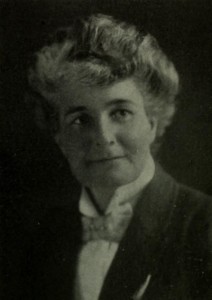Part two—the obscure and the one-hit wonders
Part one dealt with the ‘big names’. Now, we are looking at the lesser fry who nonetheless were best-sellers between 1830 and 1930
G.W.M. Reynolds, The Mysteries of the Courts of London (8 vols, 1848 – 55).
Occasionally to be found in second hand bookshops, but rarely bought. In 1924 the TLSpronounced Reynolds as ‘ by far the greatest and the most fertile of a large crowd of authors who, in their fiction in penny weekly numbers and sixpenny monthly parts, reached a class of the early Victorian community untouched by both Dickens and Thackeray’.
Reynolds’ books were devoured by servants, seamstresses and mechanics, and according to the same TLS reviewer, ‘the circulation must have run into millions’.
Mrs Henry Wood, East Lynne (1861)
Mrs Wood, though not exactly obscure, belongs in the category of popular and bad. A bit like pot noodles. The critic H. W. Garrod found himself crying while reading a copy of East Lynne in a railway carriage. When asked by a fellow passenger what the matter was he replied that he was crying because the book was so bad. By 1900 sales had passed the half million mark. Says it all, really.
Mrs Walton, Christie’s Old Organ(1875)
A religious rather than a lewd tale, now sought after as a result of featuring in the hilarious Bizarre Books.
Fergus Hume, The Mystery of a Hansom Cab (Melboune n.d, but c1888).
A legendary rarity in the annals of book publishing. It first appeared in Australia, but the publisher soon transferred his business to London and formed The Hansom Cab Publishing Company. The first Melbourne edition of 5,000 copies sold in a week; the first London edition of 25,000 went in three days. All traces of the first edition have vanished, according to Desmond Flower, which seems extraordinary. The earliest known copy, which is marked 100,000, was issued by The Hansom Cab Publishing Company, n.d. The book is still sought after. See abebooks.com
Sarah Grand, The Heavenly Twins (1893)
Rejected by George Meredith when he was a reader at Chapman and Hall’s on the grounds that the author ‘had ideas, but could not yet drive a story ‘. The first edition consisted of a few copies printed for the author at Warrington. This was followed by the public edition, which sold in large quantities. Madame Grand later deserted literature for local politics, becoming Mayor of Bath.
Victoria Cross, Anna Lombard (1901)
Flower reported that ‘the publishers are at present advertising the fact that they have sold over five million copies of this book ‘. Who knew?
Florence Barclay, The Rosary (1909)
A first novel which sold over 150,000 copies in its first nine months.
[RR]


Fergus Hume sold the copyright of The Mystery of a Hansom Cab for 350 and died in poverty. He wrote over a hundred more books and none were anything like as successful.
Before he went down with my ham-fistedness, Fergus Hume sold the copyright of The Mystery of a Hansom Cab for £50. Apologies.
Thanks Roger. £50 would not buy you a decent early copy of the book now. The true first is impossible to find as I recall.
Interesting that Tolstoy thought so highly of Mrs. Wood’s novels:
http://www.openculture.com/2014/07/leo-tolstoy-creates-a-list-of-the-50-books-that-influenced-him-most-1891.html
Dale Nelson
Interesting list Dale. Tolstoy was also a big lover of Epictetus and Lao Tzu, both still very popular.